- Home
- Graham Hancock
America Before Page 3
America Before Read online
Page 3
It seems we want to see everything, but only at a distance, through a technological filter.
Little wonder, therefore, that, for so many of us, the sky has entirely lost the numinous aura that once clung about it, and has been reduced to a vague, out-of-focus, largely irrelevant, not even beautiful background to the much more important material business of our daily lives. Reared in a culture that focuses all its energies on the production and consumption of commercial goods and services, it just looks to us like bad business to commit huge resources, intelligence, and energy to building great monuments aligned—for example—to the rising or setting points of the sun on the equinoxes or on the summer or winter solstices.
Yet for thousands upon thousands of years this is exactly what happened all around the world.
WHERE HEAVEN AND EARTH MEET
GO TO THE CITY OF Luxor in Upper Egypt, place yourself at the western entrance of the great Temple of Karnak in the predawn on December 20/21 (the winter solstice and shortest day of the year in the Northern Hemisphere), and wait patiently until the sun appears. When it does you will see that its first rays shine directly down the kilometer-long axis of the temple that is oriented south of east at precisely the correct angle to target the rising point of the sun on that special day.
Or go to Stonehenge in the predawn on June 20/21, the summer solstice, enter the great stone circle, and face north of east along its axis toward a rough, unquarried megalith—the Heel Stone—standing prominently outside the circle. As light floods the sky you will see how carefully and purposefully the Heel Stone seems to have been placed, almost like the front sight on the barrel of a rifle, to target the rising sun on that special day.
Or go to Angkor Wat in Cambodia and position yourself dead center at the western end of the entrance causeway of the great temple complex in the predawn on March 20/21, the spring equinox, or on September 20/21, the autumn equinox, when night and day are of equal length and the sun rises perfectly due east. On either of these two special occasions you will discover that the causeway and temple are so precisely oriented that the sun, as it rises, perches for a moment atop Angkor’s central tower and lights up the entire majestic complex like a fairy-tale kingdom.
All these places are man-made sanctuaries that speak to the union of heaven and earth at key moments of the year. They might rightly be described as hierophanies because their fundamental purpose is to reveal and manifest the sacred connection between macrocosm and microcosm, sky and ground, “above” and “below.”
Scattered around this majestic garden planet we call Earth, however, are other, even more powerful hierophanies, put in place not by human beings but by nature, where ground and sky whisper to one another with exceptional intimacy. Wise ancients, who knew the garden long before us, sought out such spots, which they held to be sacred, and when they found them they would sometimes modify them to honor and enhance the communion witnessed there.
Research published in 2018, though subject to further confirmation, suggests that Stonehenge may be one of them. Archaeologists have long believed that its taller, heftier pillars—the big limestone “sarsens”—did not occur locally on Salisbury Plain where Stonehenge stands but had to be dragged 18 miles from the Marlborough Downs.3 The enduring mystery, therefore, was, why anyone would go through all that trouble and effort moving megaliths weighing up to 50 tons to Salisbury Plain when Stonehenge could simply have been erected on the Marlborough Downs instead?
The new research offers a rather surprising answer. It seems that two of the sarsens—Stone 16 in the southwestern quadrant of the great circle, and the Heel Stone outside the circle to its northeast—were NOT after all brought here from the Marlborough Downs but have stood naturally on Salisbury Plain for millions of years.4 What’s magical about them, however, is their alignment. An observer behind Stone 16 looking northeast toward the Heel Stone at dawn on the summer solstice will see the sun rise behind it. Then 6 months later, at the winter solstice, an observer behind the Heel Stone looking southwest at Stone 16 will see the sun set behind it.
New research indicates that Stone 16 and the Heel Stone were present on Salisbury Plain, aligned by nature to the solstices, before Stonehenge was built. IMAGE: DERIVATIVE OF “STONEHENGE” BY RUSLANS3D, CC BY 4.0.
Archaeologist Mike Pitts, who led the research, suggests that the way the alignment of these two sarsens signaled midwinter and midsummer would not have gone unnoticed by the ancient Britons, who would have accorded special significance to the site long before they planned the geometry of Stonehenge and raised up the whole spectacular complex of megaliths around the preexisting axis. Indeed, if Pitts is right, it is because of this natural solstice axis that Stonehenge was built here in the first place.5
Another example of humans sacralizing a place where earth speaks to sky is the Great Sphinx of Giza in Egypt, which is thought to have begun life as a “yardang”—a ridge of bedrock shaped by millennia of desert winds into a completely natural form somewhat resembling a lion.6 Many such outcrops, described by European explorers of the eighteenth and nineteenth centuries as “sphinxlike” and as resembling “lions,” exist in Egypt’s Western Desert.7 But what was special about this one was its situation overlooking the Nile Valley and the curious fact that nature had oriented it, with considerable precision, to due east and thus to the rising point of the sun on the equinoxes. As suggested at Stonehenge, it looks like this celestial alignment is what attracted human beings to it in the first place, motivating them to transform it into a giant monolithic work of sculpture, first enhancing its naturally leonine form and much later, in the time of the pharaohs, recarving its (by then heavily eroded) leonine head into a human likeness.
Go to Giza at dawn on the winter solstice and you will see the sun rising far to the south of east, and thus far to the right of the gaze of the Sphinx. Go there at dawn on the summer solstice and you will see the sun rising far to the north of east, and thus far to the left of the gaze of the Sphinx. But go there at dawn on either the spring or the autumn equinox and you will witness the sacred communion of heaven and earth, with the gaze of the Sphinx perfectly aligned to the disk of the sun as it rises.
Such enchanted but fleeting conjunctions of earth and sky are not confined to the Old World.
In the New World, Native Americans likewise built immense structures to honor and channel precisely the same moments and energies and sought out certain striking topographical features—regarded as sacred—through which the celestial and terrestrial spirits were already bound in intimacy. Thus, just as Egypt has its Great Sphinx, natural but modified and enhanced by humans to bind sky and ground at sunrise on the equinoxes, and just as the natural solstitial axis of Stonehenge has been modified and enhanced by humans with numinous and beautiful effect, so North America has its Great Serpent Mound, a natural ridge, modified and enhanced by humans to join heaven and earth at sunset on the summer solstice.
In their 1987 paper the Hardmans proposed a viewpoint near the center of the oval formation in front of the Serpent’s head where an altar of large stones was reported to have remained in place until it was destroyed in the nineteenth century. From this viewpoint they settled on an alignment at azimuth 302 degrees targeting sunset on the summer solstice.
HERE COMES THE SUN
SERPENT MOUND’S STRIKING CONNECTION TO the summer solstice went unnoticed, unobserved, and unstudied by anyone in our era until 1987. That was the year in which the fall issue of the Ohio Archaeologist published a landmark paper by Clarke and Marjorie Hardman titled “The Great Serpent and the Sun.”
In this paper, the ridge behind which the sun sets on June 20/21 as viewed from Serpent Mound was daringly renamed “Solstice Ridge” by the authors, and the orientation of the open jaws of the Serpent to the setting point of the sun on the summer solstice was recognized and made explicit for the first time.8
What has been seen cannot be unseen, even in an age so radically disconnected from the cosmos as our own. Thanks to the
Hardmans, therefore, no one who takes a serious look at Serpent Mound can now fail to observe the way the Serpent’s jaws line up to the setting summer solstice sun. Because those jaws gape wide, however, it’s an alignment that would have been as general and obvious 13,000 years ago as it is today. The Hardmans therefore sought to refine it. As shown in the diagram above, they selected as their viewpoint the reported location, near the center of the oval formation in front of the Serpent’s head, of the former “elevation of large stones” described by Squier and Davis as destroyed when they visited the site in the mid-nineteenth century.9 The Hardmans argued that an observer who positioned himself in this location on the evening of the summer solstice would see the sun set at an azimuth of 302 degrees behind a specific feature on “Solstice Ridge”—a feature something like the front sight on a rifle that they nominated “Solstice Knob.”10
The “azimuth” of an object is its distance from true north in degrees counting clockwise. North is nominated as 0 degrees, so azimuth 90 degrees is due east, azimuth 180 degrees is due south, and azimuth 270 degrees is due west. An azimuth of 302 degrees will therefore be 32 degrees north of west.
ROASTING THE HARDMANS
IT’S OFTEN THE CASE IN archaeological scholarship, and actually good science, that whenever an adventurous and unusual new thesis is published attempts will be made to falsify it. It was therefore only to be expected, as I turned to the winter 1987 issue of Ohio Archaeologist, that I would find a refutation of the Hardmans’ work. Titled “Serpent Mound Revisited,” the paper was written by William F. Romain, a very interesting and important researcher in this field.
On the assumption that Serpent Mound had been built around 2,000 years ago (the consensus archaeological opinion in the 1980s) Romain pointed out that the Hardmans proposed alignment had failed to take into account a well-established archaeoastronomical phenomenon, namely that the sun’s rising and setting points along the horizon do not remain fixed but slowly change down the ages.11
This happens because sunrise and sunset positions are constrained not only by the latitude from which they are observed, but also by the tilt of the earth’s axis in relation to the plane of its orbit. Presently the angle of the tilt stands at around 23° 44'.12 This angle, however, is not fixed but slowly increases and decreases in a 41,000-year “obliquity cycle” between a minimum of 22.1° and a maximum of 24.5°.13 The resulting changes to sunrise and sunset positions along the horizon over long periods are “sizable,” according to leading archaeoastronomer Anthony F. Aveni,14 whose calculations Romain used in his 1987 paper to highlight what he believed was the fatal flaw in the Hardmans’ case. They had accepted the epoch of 2,000 years ago for the construction of Serpent Mound, but their proposed sunset azimuth of 302° made no sense. Viewed from Serpent Mound 2,000 years ago, as Romain correctly pointed out, “the summer solstice sun would have set at an azimuth of about 300.4 degrees. … In other words, the summer solstice sun would have set roughly 1.6 degrees, the equivalent of 3 sun diameters, south of Solstice Knob.”15 If Serpent Mound really was that far out of alignment 2,000 years ago when it was supposed to have been built, then only four logical conclusions presented themselves: (1) its builders were very poor astronomers; (2) they hadn’t intended to orient the monument to the summer solstice sunset at all; (3) the Hardmans were right in their general thesis but had gotten the proposed observation point and sight line wrong; or (4) The alignment had not been made 2,000 years ago but at a completely different time.
In another paper, published in Ohio Archaeologist a year later, Robert Fletcher and Terry Cameron picked up where Romain had left off in a renewed roasting of the Hardmans. Noting that the summer solstice sun as viewed from Serpent Mound currently sets at azimuth 300° 05', and noting the effects of the obliquity cycle, they treat with sarcasm the Hardmans’ claim that the Serpent’s primary orientation was to azimuth 302°: “If a horizon marker at 302 degrees was used at one time to mark the summer solstice sunset position, the Serpent, by implication, must have been constructed around 11,000 BC. There may be some who would have problems with that date.”16
It’s the last line that reveals the scorn.
You bet there would have been “some” in 1988 who would have had problems with that date! Indeed, not just some but all archaeologists would have regarded it as the province of the lunatic fringe to suggest that Serpent Mound might in any way go back as far as 11,000 BC, that is, to around 13,000 years ago.
In the 1980s, as we’ll see in part 2, there was a general acceptance that humans might have first arrived in the Americas by 12,000 or even 13,000 years ago. But those earliest migrants were deemed by archaeologists to have been scattered hunter-gatherer groups, living from hand to mouth and lacking the vision, sophistication, and level of organization required to create a monument on the scale of Serpent Mound.
William Romain’s summer solstice sunset alignment for Serpent Mound along azimuth 300.1 degrees. This alignment would have targeted the summer solstice sunset 2,000 years ago and differs by 1.9 degrees from the alignment proposed by the Hardmans.
The real implication of the Hardmans’ “error”—the clue they’d inadvertently stumbled upon, of possibly much more ancient origins for the site—was therefore never followed up because the prevailing theory of the peopling of the Americas would not admit it as evidence.
Meanwhile, as the years passed, William Romain changed his mind. In 1987 he had written in his critique of the Hardmans that the orientation of Serpent Mound could be “better explained by a set of facts having nothing to do with the summer solstice.”17 By the year 2000, however, he was ready to accept as “unequivocal” an alignment from the head of the Serpent “through the oval embankment to the summer solstice sunset,”18 and showed in a map how this could be done to target azimuth 300.4 degrees, later revised to azimuth 300.1 degrees (personal communication October 31, 2018), where the summer solstice sun would have set 2,000 years ago.19 He also reiterated the definitive north–south line he’d identified in 1987 running through the monument from the inner spiral of its tail to the hinge of its jaws.20
BUT IS THE SERPENT REALLY 2,000 YEARS OLD?
BACK IN THE 1980S, WHEN Romain first laid into the Hardmans, the one thing both sides agreed on was that Serpent Mound was about 2,000 years old and was one of the later works of “the Adena,” a Native American culture thought to have flourished between approximately 800 BC and AD 100.21 Though no carbon dating had been done, this was the consensus view of almost all experts at the time, and Romain and the Hardmans not only accepted it without question but also used it as the basis for their own calculations of alignments.
Imagine their surprise, therefore, when Robert Fletcher of the University of Pittsburgh (one of the early critics of the Hardmans), William Pickard of Ohio State University, and Bradley T. Lepper of the Ohio Historical Society carried out the first carbon-dating of Serpent Mound and found it to be much younger than everyone had supposed—not 2,000 years old or more, but 1,000 years old or less.22 To be precise, they concluded that the most likely date for its construction was 920 years (plus or minus 70 years) before the present,23 and that it must therefore be the work of the so-called Fort Ancient culture thought to have flourished at around that time.24
Published in spring 1996 in a respected peer-reviewed journal, this notion of a much younger Serpent Mound went on to enjoy a level of widespread acceptance among American archaeologists that would certainly not have been accorded to it if the redating had gone in the other direction. Moreover, after being quickly and uncritically adopted into doctrine,25 it was then disseminated to the public for most of the next 20 years as unquestioned historical fact.26
As part of this process, an Orwellian scene took place at Serpent Mound in 2003 when the official Ohio historical marker that had previously attributed the monument to the Adena culture was “unhappened” and replaced by another in which visitors were informed that the earthwork had been built “around 1000 A.D. by the Fort Ancient
culture.”27
Let’s take a look at the evidence on which Fletcher, Pickard, and Lepper based the 1996 claim that so effectively redefined Serpent Mound.
Part of it has to do with an absence of evidence of typical Adena cultural artifacts—indeed an absence of any artifacts—in those parts of the Serpent excavated prior to the 1990s.28 As Fletcher & Co. rightly point out, it was only because a number of “definite Adena burial mounds” had been found nearby that Serpent Mound had been attributed to the Adena in the first place—an attribution that was therefore “somewhat tenuous.”29
As to the positive evidence for their claim, Fletcher & Co. give special prominence to stone flakes and tools uncovered by their excavations at Serpent Mound, including “a classic Fort Ancient Madison point.”30 They also recovered twenty-nine pottery shards “assignable to some period between A.D. 350 and 950.”31 Finally—and clearly the clincher as far as they’re concerned—they list the radiocarbon dates for three samples of charcoal retrieved during their excavations.
One, with a date of 2920 plus or minus 65 years before the present, they immediately dismiss because it came from a level “far below the estimated original surface upon which Serpent Mound was built.”32
But the other two they like. Both were recovered from the “intact sediment used to create the effigy,” and both returned the same calibrated radiocarbon date of AD 1070.33
These two identical dates, Fletcher, Pickard, and Lepper conclude, “Represent valid chronological evidence for the construction of Serpent Mound sometime during the Late Prehistoric or Early Fort Ancient periods.”34

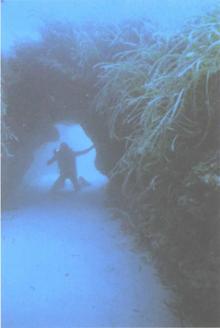 Underworld: The Mysterious Origins of Civilization
Underworld: The Mysterious Origins of Civilization The Master Game: Unmasking the Secret Rulers of the World
The Master Game: Unmasking the Secret Rulers of the World America Before
America Before Entangled
Entangled War God: Nights of the Witch
War God: Nights of the Witch War God: Return of the Plumed Serpent
War God: Return of the Plumed Serpent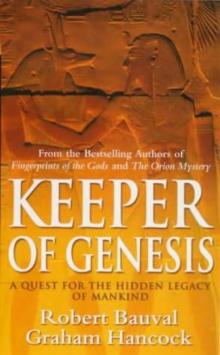 The Message of the Sphinx AKA Keeper of Genesis
The Message of the Sphinx AKA Keeper of Genesis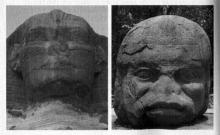 Fingerprints of the Gods
Fingerprints of the Gods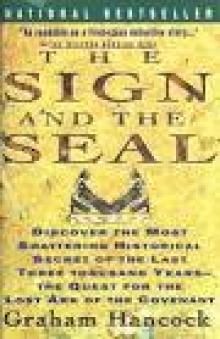 The Sign and the Seal
The Sign and the Seal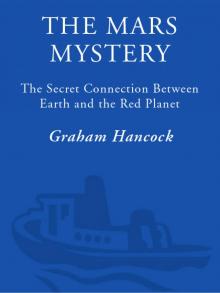 The Mars Mystery: The Secret Connection Between Earth and the Red Planet
The Mars Mystery: The Secret Connection Between Earth and the Red Planet Magicians of the Gods: The Forgotten Wisdom of Earth's Lost Civilization
Magicians of the Gods: The Forgotten Wisdom of Earth's Lost Civilization War God
War God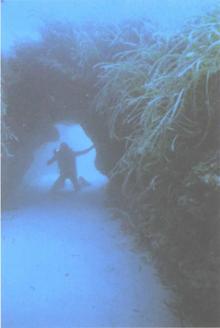 Underworld
Underworld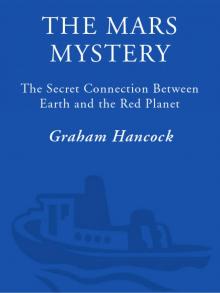 The Mars Mystery
The Mars Mystery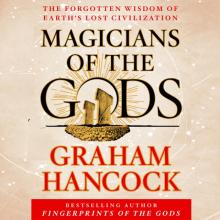 Magicians of the Gods
Magicians of the Gods The Master Game
The Master Game